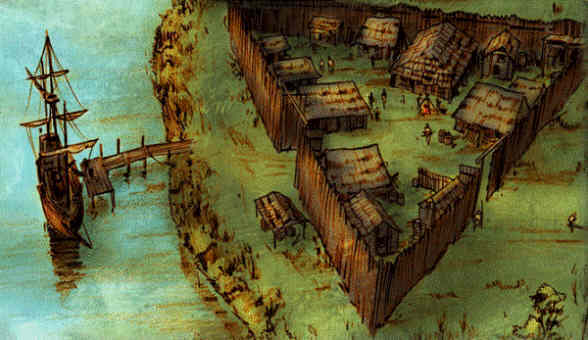
Johannes Kepler: December 27, 1571 to November 15, 1630 (Image from Wikimedia Commons)
Born in Germany during the 16th century, Kepler was born to a poor Lutheran family. However, his views on both a heliocentric solar system and his personal beliefs contradicting the Lutheran Faith in the Formula of Concord resulted in him alone in a time of religious strife, despite his own religious beliefs.
After a math education at a university, he worked with another man by the name of Tycho Brahe, a wealthy man and the best naked eye observer of the night sky. After his death, Kepler took his data and continued to do calculations with it, eventually creating three laws that determined how the planets roamed around the night sky. This was a heliocentric model similar to Copernicus, but had several improvements and changes.
- Planets do not move in perfect circles, but rather ellipses.
- The area a line connecting the planet to the star crosses is equal for equal portions of time. At more elliptical orbits, the planet would move faster when closer to the star and slower farther away, but the area would be the same.
- he equation for the time taken for a planet to rotate around a sun was P^2 = k*(A)^3 where P was the period and A was the semi major axis of the orbit.
For more information, click here for NASA’s information or here for more detail on Kepler’s personal life.
A few things going on during this time…
The foundation of Jamestown

The foundation of the first English permanent colony, Jamestown, was established during Kepler’s life. In 1607, Jamestown was founded, and became the beginning of the English colonies that would evolve into America. Essentially, the first colonists and pilgrims later in 1620 navigated to the other side of the world into unknown territory using stars, yet they all believed that the earth was at the center of the universe. Fun fact, I was born a few minutes away from here in Hampton Virginia on the same peninsula.
Japanese Invasion of the Korean Peninsula

On the other side of the globe, the Japanese invasions of Korea were occurring from 1592 to 1598. Although nothing to do with European culture nor astronomy I wanted to put this down since I am Korean. Many of the Korean successful defenses were on sea, led by Admiral Yi, who is oft considered to be the greatest naval commander ever. In addition to this, he was the inventor of the turtle ship, the first ship ever to be armored in iron. Able to ram, pivot on a point, and emit sulfur smoke all while firing cannon, Admiral Yi won all 16 of his battles with extreme ease. This design and ships were destroyed later by later kings but were revived again by the United States when they designed an ironclad ship to fight the Confederacy in 1862. The two ironclad ships fought, again, in my hometown of Hampton, Virginia.
J.S. Bach was born
Johannes Bach was born in 1604. One of the most famous composers of all time, he was also one of the most prolific. He became an organist and was commissioned for several pieces of church music, my favorite being the St. Matthew’s Passion. The fact that people were still discovering the other side of the world during all of this is quite mind boggling. People are looking to the skies and determining accurately how and when these planets will come into view while there were no accurate maps of the eastern American coast at the time. An entire hemisphere was being explored by Europeans while Kepler was already calculating the laws of physics governing other planets.
Furthermore, technology was not as advanced. The Turtle Ship by Admiral Yi was by far the most advanced ship of its era, arguably across the globe. Even still, it had no iron hull; iron ships would not exist until 1859. It was propelled by sails, since there were no steamboats invented till 1807. Traveling upstream a river without oars was considered an arduous task at the time. Galileo’s telescope was quite primitive, and even with the wealth of Tycho Brahe, naked eye observations can only give so much information.
Finally, Johannes Bach lived during a time where the church was the cornerstone to everything in life. Almost everyone in Europe went to church and believed what was taught by the priest. Contradicting scripture or anything that was considered part of “God’s perfect design” would be not only looked down upon by the church but also society.




